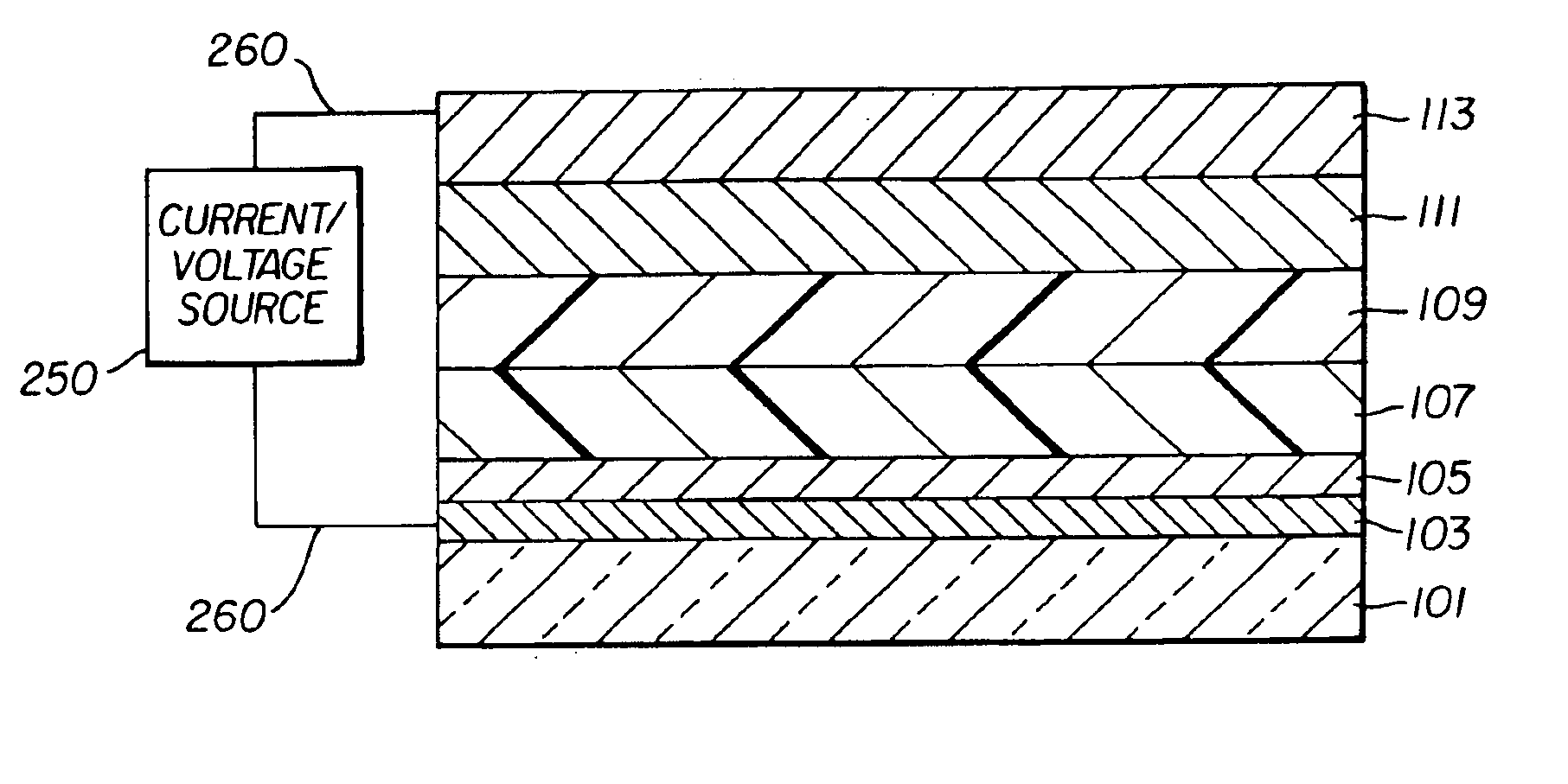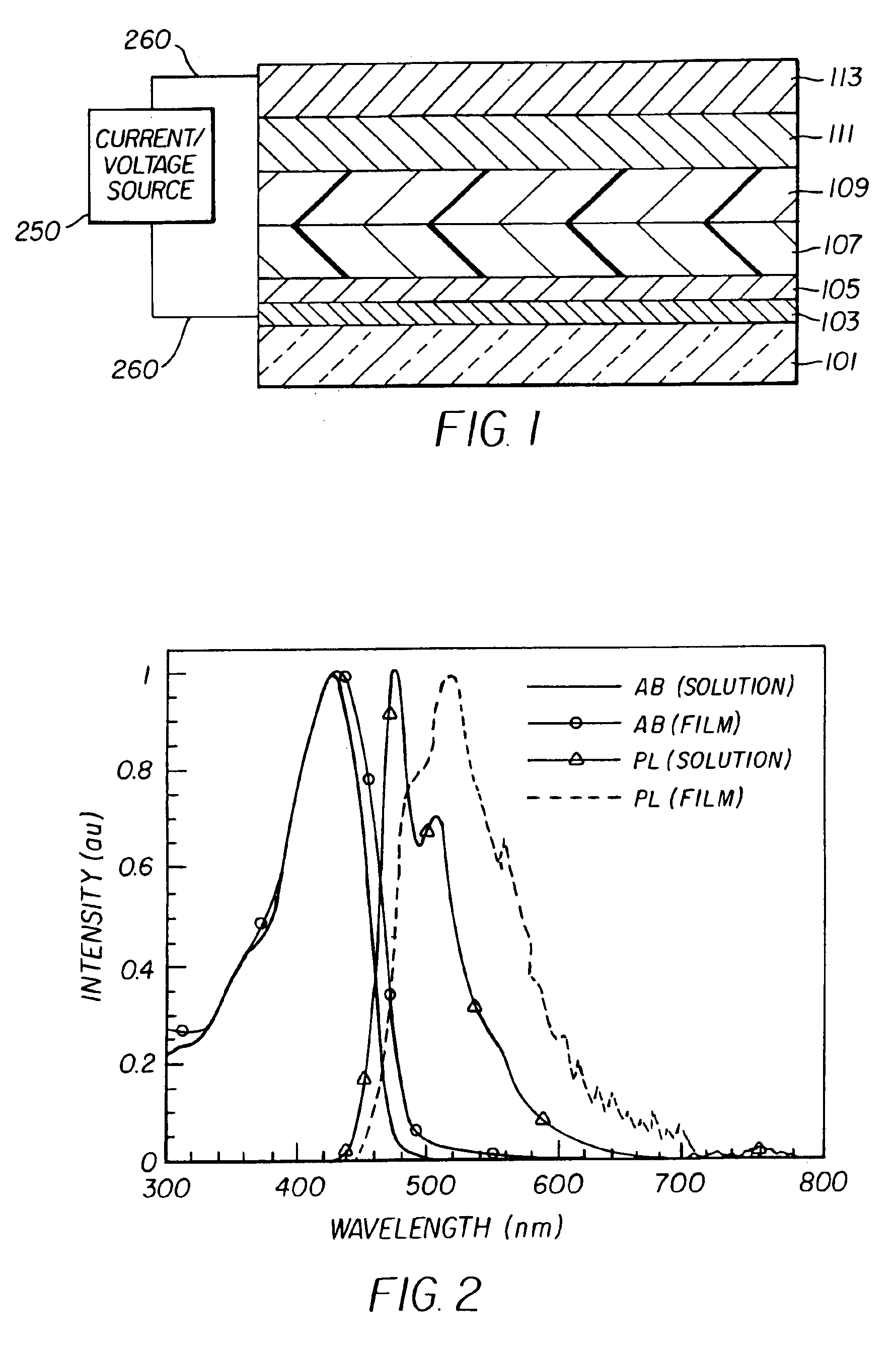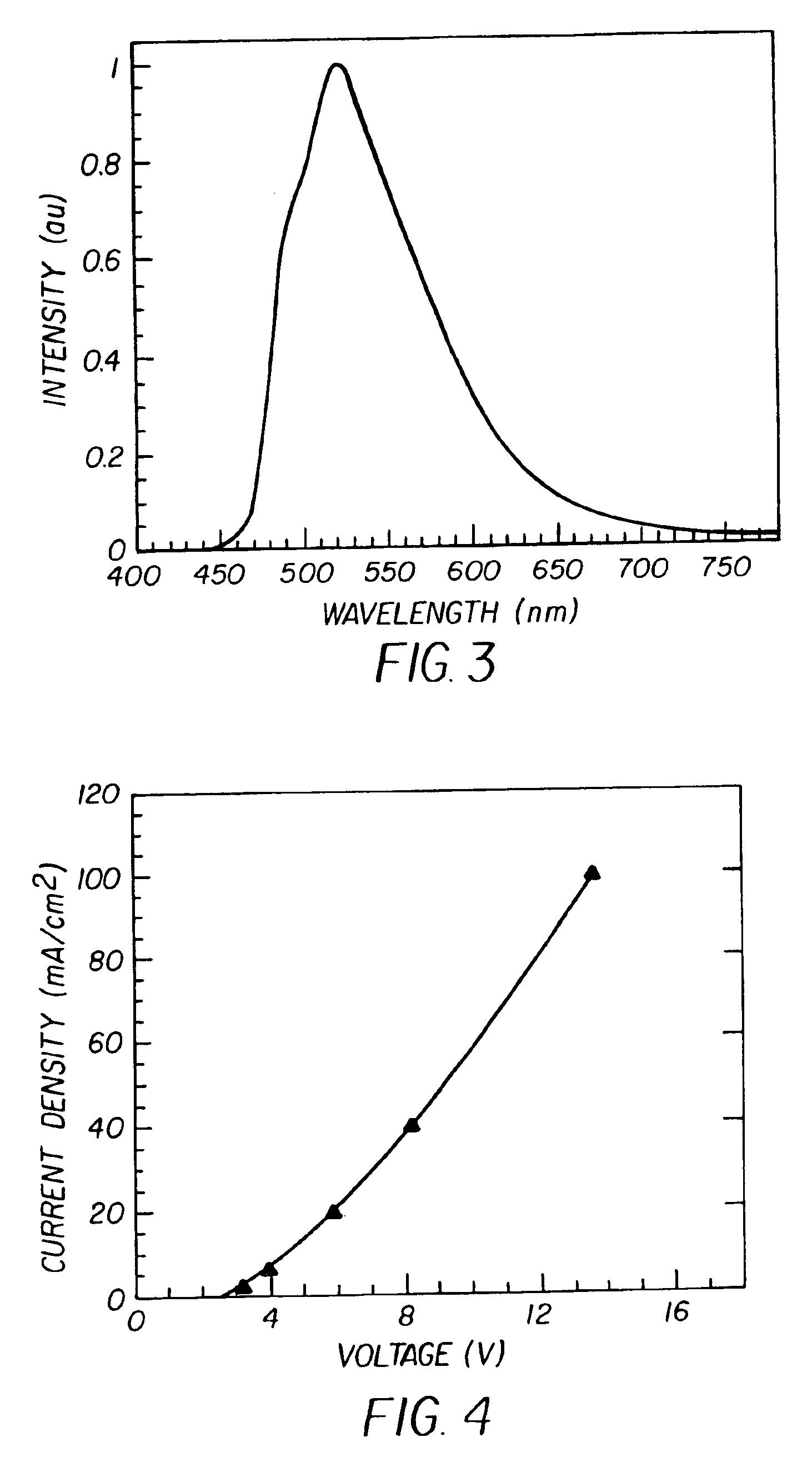Complex fluorene-containing compounds
a fluorene structure and complex technology, applied in the field of complex fluorene structure organic compounds, can solve the problems of insufficiently satisfying the needs of any of the existing technologies, difficult processing and obtaining large surface areas, and efficient blue light, and achieve excellent solubility and thermal stability, good color tunability, and high efficiency
- Summary
- Abstract
- Description
- Claims
- Application Information
AI Technical Summary
Benefits of technology
Problems solved by technology
Method used
Image
Examples
example 1
Synthesis of Compound 1 (2,5-dimethoxy-heptanophenone)
1,4-Dimethoxybenzene (15.0 g, 0.11 mol) was dissolved in 100 mL of methylene chloride and the solution was cooled to 0° C. To the solution was added aluminum chloride (17.37 g, 0.13 mol) in portions and the mixture was stirred for 10 min. Heptanoyl chloride (17.75 g, 0.12 mol) was added via an additional funnel. After 2 h, reaction was complete and was quenched with dilute HCl solution carefully. The organic phase was separated, washed with dilute sodium bicarbonate, and dried over magnesium sulfate. The crude product was purified by column on silica gel using either / heptane (10 / 90) as an eluent to give 20.52 g pure product as clear oil (75% yield). FD-MS: 250 (M+).
example 2
Synthesis of Compound 2 (2,5-dihydroxy-heptanophenone)
Compound 1 (10.0 g, 0.040 mol) was dissolved in 150 mL of toluene. To this solution was added aluminum chloride (11.72 g, 0.088 mol) in portions. The reaction was heated to 80° C. overnight. After cooled to room temperature, the reaction was poured into dilute HCl solution. The organic phase was separated and the aqueous phase was extracted with methylene chloride. The combined organic phase was dried over magnesium sulfate. The crude product was purified by recrystallization from hexane / ethyl acetate to give 6.42 g of pure product as yellow fluffy solid (72% yield). 1H NMR (CDCl3) δ ppm: 0.89 (t, J=6.6 Hz, 3 H), 1.28-1.39 (m, 6 H), 1.67-1.76 (m, 2 H), 2.91 (t, J=7.5 Hz, 2 H), 5.37 (br, 1 H), 6.87 (d, J=8.9 Hz, 1 H), 7.03 (dd, J1=8.9 Hz, J2=3.0 Hz, 1 H), 7.22 (d, J=3.0 Hz, 1 H), 12.06 (s, 1 H); FD-MS: 222 (M+).
example 3
Synthesis of Compound 3 (5-benyloxy2-hydroxy-heptanophenone)
Compound 2 (53.60 g, 0.24 mol) was dissolved in 500 mL of acetone. To this solution was added anhydrous potassium carbonate (36.66 g, 0.26 mol). The mixture was stirred for 10 min and benzyl bromide (45.37 g, 0.26 mol) was added dropwise. The reaction was refluxed overnight. After cooled to room temperature, the reaction was filtered and acetone was evaporated. The residue was extracted with ether and dried over magnesium sulfate. The crude product was purified by column on silica gel using heptane / ethyl acetate (98 / 2) as an eluent. The product was obtained as light yellow solid after further recrystallization from heptane, 50.12 g (0.67% yield). 1H NMR (CDCl3) δ ppm:0.90 (t, J=6.6 Hz, 3 H), 1.32-1.39 (m, 6 H), 1.64-1.71 (m, 2 H), 2.88 (t, J=7.5 Hz, 2 H), 5.03 (s, 2 H), 6.91 (d, J=9.0 Hz, 1 H), 7.15 (dd, J1=9.0 Hz, J2=3.0 Hz, 1 H), 7.25 (d, J=3.0 Hz, 1 H), 7.32-7.43 (m, 5 H), 11.99 (s, 1 H); FD-MS: 222 (M+).
PUM
| Property | Measurement | Unit |
|---|---|---|
| structure | aaaaa | aaaaa |
| electroluminescent | aaaaa | aaaaa |
| structures | aaaaa | aaaaa |
Abstract
Description
Claims
Application Information
 Login to View More
Login to View More - R&D
- Intellectual Property
- Life Sciences
- Materials
- Tech Scout
- Unparalleled Data Quality
- Higher Quality Content
- 60% Fewer Hallucinations
Browse by: Latest US Patents, China's latest patents, Technical Efficacy Thesaurus, Application Domain, Technology Topic, Popular Technical Reports.
© 2025 PatSnap. All rights reserved.Legal|Privacy policy|Modern Slavery Act Transparency Statement|Sitemap|About US| Contact US: help@patsnap.com



